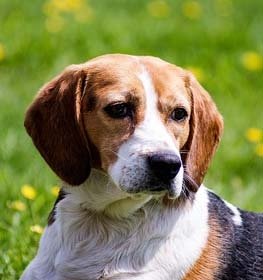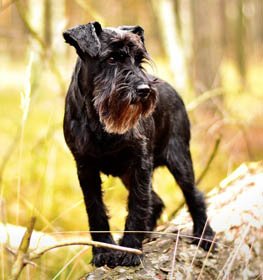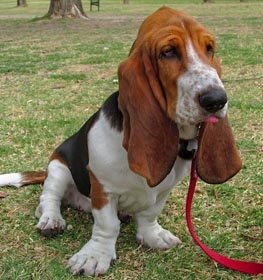Russian Spaniel Information & Dog Breed Facts
Collection of all the general dog breed info about Russian Spaniel so you can get to know the breed more.
| Group | Hunting Dogs |
|---|---|
| Popularity Rank | 309 |
| Reviews | 1 |
| User Ratings | |
|
Compare the Russian Spaniel With Other Dogs
Select at least one dog breed to make the comparsion. | |
 | |
| Origin | |
|
Common Names & Aliases
What other names is a Russian Spaniel known by? Discover all traditional, regional and informal names used for this breed. | Rosyjski Spaniel |
|---|---|
|
Breed Classification
What type of dog breed is a Russian Spaniel? Learn about its genetic classification and breeding category. | Cross Breed |
|
Size Classification
What size category is a Russian Spaniel? Learn how big the Russian Spaniel breed typically grows. | Small |
|---|---|
|
Weight Statistics
How much does a Russian Spaniel weigh? Discover typical weight ranges for adult males and females of the Russian Spaniel breed. | Male: 20–35 pounds (9–16 kg), Female:20–35 pounds (9–16 kg) |
|
Average Weight
What is the average weight of a Russian Spaniel? | Male: 20–35 lbs (9.1–15.9 kg), Female: 20–35 lbs (9.1–15.9 kg) |
|
Height
How tall is the Russian Spaniel? Russian Spaniel height: | Male: 15–17.75 inches (38.1–45.1 cm), Female: 15–17.75 inches (38.1–45.1 cm) |
|
Average Height
What is the average height of a Russian Spaniel? | Male: 15–17.75 inches (38.1–45.1 cm), Female: 15–17.75 inches (38.1–45.1 cm) |
|
Price Range
How much does a Russian Spaniel puppy cost? Find current market prices and factors affecting Russian Spaniel costs. | $1200-$1500 If you choose to purchase the Russian Spaniel, you should know that the mentioned amount of money is an average of the collected data from breeders’ sites and puppy finder places. If you have a Russian Spaniel for sale, please advertise it on a reliable website to make sure the Russian Spaniel gets to a happy place. |
|---|---|
|
Availability
How easy is it to get a Russian Spaniel? How many Russian Spaniel are there in the world? | Average: The Russian Spaniel is a commonly available dog breed. There is less risk of overbreeding compared to the very popular dogs. Of course, they may be more popular in some countries, and inbreeding may occur, so be careful. |
|
Intelligence Rating
How intelligent is a Russian Spaniel? Discover the Russian Spaniel's intelligence ranking and learning capabilities. | Average: It takes patience to teach this breed any tricks or commands, but the effort is worth it. They understand and remember new commands after an average of 25-40 repetitions.
The Russian Spaniel ranks average in the intelligence ranking of dogs. |
|---|---|
|
Training Difficulty
How easy is it to train a Russian Spaniel? Learn about the Russian Spaniel's trainability and response to training methods. | Russian Spaniel dogs are quite easy to train. Sometimes they can be challenging, but if you're consistent in teaching new commands they will obey for sure. |
|
Watchdog Rating
How good is a Russian Spaniel as a watchdog? Learn about the Russian Spaniel's alertness and guarding instincts. | Russian Spaniel dogs are average watchdogs. If they sense something different, they will alert you, but observation isn't considered their main job.
|
|
Territorial Protection
Is a Russian Spaniel protective of its territory? Learn about the Russian Spaniel's guarding instincts and behavior. | Russian Spaniel dogs are not the best to protect their territory. Better to have the protection of your house and property supervised by others. |
|
Personality Traits
What personality does a Russian Spaniel have? Learn about characteristic Russian Spaniel temperament and behavior traits. | FriendlyAffectionateReliableDevotedGood-naturedAmiable |
|---|---|
|
Sensitivity Level
How sensitive are they? Russian Spaniel sensitivity: | Sensitive: Russian Spaniel dogs don't like an irregular daily routine, noisy household, and frequent guest visits.
This breed's emotional level reflects their owner's feelings and they don't handle punishments well. |
|
Affection Level
How affectionate are they? Is a Russian Spaniel a good family dog? | High: Russian Spaniel dogs are genuinely loyal, soft and gentle, loving, and affectionate dogs toward their handlers. They enjoy quality time with their owners despite the activity and are considered great therapy dogs for those in need. This breed responds strongly to their handler's emotions because they bond closely. Their happiness is your happiness. |
|
Social Needs
How much social interaction does the Rosyjski Spaniel need? Russian Spaniel social needs: | Russian Spaniel dogs are a social breed. They enjoy being around people or other animals. This breed doesn't tolerate being left alone. |
|
Impulse to Wander or Roam
How likely is the Russian Spaniel to run away? Does this breed explore or wander a lot? Does Russian Spaniel roam? | The wanderlust potential of the Russian Spaniel is strong enough to escape from home. They have a strong desire for exploring the world. Safer to walk them on a leash unless you teach them how to get back to you on command. |
|
Prey Drive
Do this canine have a strong prey drive? Does Russian Spaniel have high prey drive? | Russian Spaniel dogs have a higher impulse to chase and catch something than other dog breeds. Cats or any other small animals might be in danger. It's a natural instinct, doesn't necessarily mean that Russian Spaniel dogs are aggressive. Better to keep this breed on a leash. |
|
Barking Frequency
Does a Russian Spaniel bark a lot? Learn about typical Russian Spaniel vocalization patterns and triggers. | Average: The Russian Spaniel barks occasionally. They can change their barks depending on their emotional level and what they're trying to say. Different barks could mean the same and the same barks could have different meanings.
Top reasons for barking: protection, alarm, fear, boredom, attention-seeking, greeting, separation anxiety, compulsive barking. |
|---|---|
|
Playful Nature
How playful is a Russian Spaniel? Understand the typical play drive and energy level of the Russian Spaniel breed. | Average: Russian Spaniels, like any other dog breed, like playing. Sometimes they bark in excitement for playing, but they are not the most playful dog breed. |
|
Apartment Adaptability
Can a Russian Spaniel live in an apartment? Learn about the Russian Spaniel's suitability for apartment living. | Apartment-friendly dog the Russian Spaniel breed. It is best if you have a small garden where it can occasionally go out to do its business, but this is not important at all. You can exercise him enough with a walk or two a day, so he's comfortable in an apartment. |
|
Lifestyle Adaptability
How adaptable is a Russian Spaniel to lifestyle changes? Learn about the Russian Spaniel's flexibility to new situations. | Russian Spaniel dogs adapt well to lifestyle changes and different living environments. They don't mind moving from one place to another with their owner. |
|---|---|
|
Alone Time Tolerance
Can a Russian Spaniel be left alone? Learn about the Russian Spaniel's tolerance to solitude. | Russian Spaniel dogs do best when a family member is at home during the day or if their workplace is dog-friendly so they can take the dog at work. |
|
Bite Risk Assessment
What is a Russian Spaniel biting potential? Learn about the Russian Spaniel's bite risk factors. | Low 🔽 The Russian Spaniel has a low chance of biting somebody. Top reasons for dog bite: protection, pain, excitement, herding instinct, being provoked. (Data based on the available online bite statistics.) |
|---|---|
|
Mouthing Tendency
Is a Russian Spaniel mouthy? Learn about the Russian Spaniel's tendency to use mouth during play. | Russian Spaniel dogs have an average tendency to nip, chew, playbite, or herd people. It's a common habit during puppyhood, not aggressive behavior. These "bites" don't hurt, but Russian Spaniel dogs need to be taught a good attitude. |
|
Bite Strength Rating
How strong is a Russian Spaniel bite? Learn about the Russian Spaniel's bite force measured in PSI. | Between 100 and 200 PSI 🔽 Russian Spaniel bite force: Weak. The Russian Spaniel bite force is considered weak when compared to other dog breeds. The bite force Russian Spaniel measurements usually fall below 200 PSI, making them one of the breeds with the weakest bite force. The bite force of a Russian Spaniel may be weak, but it's important to remember that any dog's bite can still be dangerous if not managed properly. Despite the bite force of Russian Spaniel being lower, it does not make them any less lovable or enjoyable as pets.
Russian Spaniel bite wounds might not be as severe, but it is still essential to be cautious and prevent any biting incidents. They are usually not aggressive and very friendly towards children and other animals. To ensure a well-behaved dog, it's essential to learn how to train a Russian Spaniel puppy not to bite from an early age. With proper training and socialization, a Russian Spaniel can be a wonderful addition to any family, providing love and companionship for years to come. |
|
Average Lifespan
How long does a Russian Spaniel live? Learn about the typical lifespan of the Russian Spaniel breed. | 14-16 years The average lifespan of Russian Spaniel: 15 years |
|---|---|
|
Climate Tolerance
How well does a Russian Spaniel handle different weather? Learn about the Russian Spaniel's climate adaptability. | Prefers average to cold weather conditions The Russian Spaniel can adapt to well to cold weather conditions, some dogs even can be a good mountain dog. |
|
Health Concerns
What health issues are common in a Russian Spaniel? Discover typical conditions affecting the Russian Spaniel breed. | Russian Spaniels tend to have more frequent health issues than other breeds. Regular vet check-ups are needed.
|
|
Vet Care Frequency
How often does a Russian Spaniel need vet visits? Learn about the Russian Spaniel's veterinary care requirements. | Frequent The Russian Spaniel should have a complete physical check-up at least once (but preferably twice) per year. If your dog shows any symptoms, call your veterinarian. |
|
Energy Rating
How energetic is a Russian Spaniel? Understand daily activity needs of the Russian Spaniel breed. | Russian Spaniel dogs have an average energy level, so if you live a semi-active life, this breed can be a good choice for you. |
|---|---|
|
Activity Requirement / Exercise Need
How much exercise does a Russian Spaniel need? How much exercise do Russian Spaniel dogs require per day?
Do Russian Spaniel dogs need a lot of exercises? | Russian Spaniel dogs have an average exercise need. This breed is satisfied with short walks every weekday and a long ones on weekends. |
|
Sleeping Need
How much sleep does the Russian Spaniel breed need? | Russian Spaniel dogs sleep 12-14 hours a day as an average dog and they're not considered a lazy breed. |
|
Obesity Tendency
Is a Russian Spaniel prone to weight gain? Learn about the Russian Spaniel's obesity risks. | High: The Russian Spaniel breed has a strong tendency to be overweight. Try to find the happy medium between exercise and feeding. If you want to keep balance, increase the amount and frequency of your daily dog walk and play with the Russian Spaniel more often.
If you notice any weight gain, consult your veterinarian and make a diet plan. Reduce unhealthy food and snacks, and measure the Russian Spaniel weight regularly. |
|---|---|
|
Food Consumption
How much food does a Russian Spaniel need daily? Learn about the Russian Spaniel's feeding requirements. | 1 to 1.5 cups of high-quality dry food a day, divided into two meals. |
|
Allergy Friendliness
Is a Russian Spaniel hypoallergenic? Learn about the Russian Spaniel's suitability for allergy sufferers. | No Russian Spaniel dogs don't do well with allergy sufferers by causing allergic reactions. Some dog breeds are even considered to higher possibility of an allergic response. Coat type isn't necessarily relevant, because most people are allergic to dander (flakes on the dog's skin) or saliva, not actually to dog hair. |
|---|---|
|
Coat Colors
What colors does a Russian Spaniel come in? Discover all possible Russian Spaniel color variations. | Black Red White Brown Tricolor |
|
Grooming Requirements
How much grooming does a Russian Spaniel need? Learn about Russian Spaniel coat maintenance requirements. | Easy to groom: The Russian Spaniel doesn't require a lot of grooming. Seasonal flea treatment is needed, but cutting the dog's hair by a professional groomer isn't necessary. Ears and eyes should be cleaned regularly to avoid infections. Russian Spaniel is a good choice if you don't have the time, skill, or money to take care of a high-maintenance dog. Recommended for beginners. |
|
Drooling Tendency
Does a Russian Spaniel drool a lot? Learn about the Russian Spaniel's drooling habits. | The Russian Spaniel is a perfect example of a very low drooling tendency. If you're disgusted by slobber spots on your clothes, the Russian Spaniel could be a perfect choice for you. Drooling is the unintentional saliva flowing outside of the mouth. It can be completely normal or a sign of a health problem. Certain dog breeds drool minimum compared to others, just like the Russian Spaniel.
If you notice any change in your dog's drooling habit, you should contact a vet as soon as possible. |
|
Stinkiness Rating
Does a Russian Spaniel smell bad? Learn about the Russian Spaniel's natural odor levels. | Medium ⏺ The Russian Spaniel has an average chance of bad smell. Top reasons for dog stinkiness: infection of bad tooth/ear/skin folds, gas attacks. |
|
Coat Characteristics
What type of coat does a Russian Spaniel have? Learn about the Russian Spaniel's fur characteristics. | FeatheredSilkyWavyTight |
|
Bathing Needs
How often does a Russian Spaniel need baths? Learn about the Russian Spaniel's bathing requirements. | 6-8 weeks Rarely. Bathing your dog is beneficial to them in more ways than just one. It’s also a good time to look for unusual scratches, bumps, fleas, and other irregularities. When their hair is wet and flat against their body, these details are more visible.
For example, short-haired dog breeds can go a very long time in between baths. These short-haired breeds shed regularly and that shedding works to naturally remove excess dirt and oil. So unless your weenie dog got into the garbage can, you can probably hold off on a bath for a while. |
|
Shedding Level
How much do Russian Spaniel dogs shed? How to control, reduce and prevent the shedding of the Rosyjski Spaniel? Do Russian Spaniel dogs shed a lot? | Russian Spaniel dogs shed moderately. It's a natural process of the hair growth cycle. Regular brushing reduces the amount of hair that sheds. It mostly depends on their health status and breed type. |
|
Child Compatibility
Is a Russian Spaniel good with children? Learn about the Russian Spaniel's behavior around kids of different ages. | Russian Spaniel dogs are kid-friendly dogs. This breed is a good choice if you have children. |
|---|---|
|
Pet Compatibility
How well does a Russian Spaniel get along with other pets? Discover the Russian Spaniel's compatibility with other animals. | Russian Spaniel dogs are generally with other pets. |
|
Stranger Friendly
Are they aggressive or friendly towards/with strangers? Russian Spaniel temperament with other people: | Russian Spaniel dogs are average friendly towards strangers. |
|
Cat Friendly
How well do Russian Spaniel dogs get along with cats? Are they good with kittens? What is this fido's temperament with cats? Can they be good with cats? Can the Russian Spaniel breed live with a cat? | Russian Spaniel dogs are average friendly towards cats. |
|
Dog Friendly
Is Russian Spaniel good with other dogs? Are they dog-friendly dogs? How well do Russian Spaniel dogs get along with other dogs? | Russian Spaniel dogs are average friendly towards other dogs. |
|
Good For First Time Owners
Is Russian Spaniel breed good for first-time owners? Do they make a good dog for novice owners? Is Russian Spaniel breed suitable for first-time owners? | Yes Russian Spaniel dogs are good for novice owners, due to their easy-going personality. |
|
Office Friendly
Are Russian Spaniel dogs good office canines? Do Russian Spaniel dogs make good office-friendly pets? Can they be office dogs? | No Russian Spaniel is not the best dog breed for office environment. |
|
Senior Citizens Friendly
Are they senior citizens friendly dogs? How well do Russian Spaniel dogs get along with the elderly people? What is the Rosyjski Spaniel temperament with senior people? Are Russian Spaniel dogs good for elderly owners? | Russian Spaniels are usually recommended for elderly people. |
|
Service Dog Capability
Can a Russian Spaniel be a service dog? Learn about the Russian Spaniel's service work potential. | Not really This breed generally not used as a service dog. A service dog is a term used in the USA to refer to any type of assistance dog specifically trained to help people who have disabilities, such as visual impairment, hearing impairments, mental disorders, seizures, mobility impairment, and diabetes. Service dogs are protected under the ADA (Americans with Disabilities Act).
Russian Spaniel is not the best breed for service purposes. |
|---|---|
|
Therapy Work Suitability
Is a Russian Spaniel good as a therapy dog? Learn about the Russian Spaniel's therapy work aptitude. | Not really This breed is generally not used as a therapy dog. A therapy dog is a dog that might be trained to provide affection, comfort, and love to people in hospitals, retirement homes, nursing homes, schools, hospices, disaster areas, and people with anxiety disorders or autism.
Russian Spaniel is not the best breed for therapeutic purposes. |
|
Scent Detection Ability
Is a Russian Spaniel good at detection work? Learn about the Russian Spaniel's scenting abilities. | Not really They are not typically employed for this type of work, but there may be exceptional cases. A detection dog or sniffer dog is a dog that is trained to use its senses (mostly its smell) to detect substances such as explosives, illegal drugs, wildlife scat, currency, blood, and contraband electronics such as illicit mobile phones.
Russian Spaniel is not the best breed for detection purposes. |
|
Search & Rescue Potential
Can a Russian Spaniel do search and rescue? Learn about the Russian Spaniel's SAR capabilities. | Not really This dog breed is not typically used as a search and rescue dog. The use of dogs in search and rescue (SAR) is a valuable component in wilderness tracking, natural disasters, mass casualty events, and locating missing people.
The Russian Spaniel is not the best breed for SAR purposes. |
|
Maritime Work Ability
Is a Russian Spaniel good on boats? Learn about the Russian Spaniel's maritime capabilities. | Not really Russian Spaniel breed usually doesn't like being on a boat. Boat dogs were typically bred for their strength, stamina, and water resistance, as they were often required to perform tasks such as pulling in fishing nets, and jumping into the water to retrieve ropes or lines, or helping to move cargo. Sailor dog is a type of dog that was bred to accompany sailors on their voyages. They were typically used for three purposes: as a working dog, a watchdog, and as a companion. A boat dog is a term used to describe a type of dog that was traditionally bred and used as a working dog on boats. |
|
Draft Work Capability
Can a Russian Spaniel pull carts? Learn about the Russian Spaniel's drafting abilities. | Not really A drafting dog or draft dog is a dog bred and used for cart pulling. Dogs bred for this work have strong builds and qualities that are needed, strength and determination.
Russian Spaniel is not the best breed for drafting purposes. |
|
Military Service Background
Was a Russian Spaniel used in military service? Learn about the Russian Spaniel's military history. | Not really In history, this breed was not really used for combat dog. |
|
Puppy Litter Size
How many puppies does a Russian Spaniel usually have? Learn about typical litter sizes. | 4-6 puppies |
|---|---|
|
Pregnancy Duration
How long is a Russian Spaniel pregnant? Learn about the Russian Spaniel's gestation period. | 60-64 days Reproductive cycle of the female Russian Spaniel: The first period called Proestrus lasts for about 9 days.
During this time the females start to attract males. You can notice by swelling vulva and bloody discharge. The second part is the Estrus when the female is receptive for the male. It lasts for about 3 to 11 days. The sign of the proestrus part is the soft and enlarged vulva. The discharge decreases and lightens in color. The third part is the Diestrus. Normally, it occurs around day 14. In this period the female’s discharge changes for vivid red and coming to its end. The vulva returns to average, and she will no longer permit mating. The fourth part called the Anestrus. The time frame between heat periods normally lasts about six months. |
|
Breeding Frequency
How often can a Russian Spaniel have puppies? Learn about safe breeding intervals. | Once a year. More frequent breeding is not healthy. It is very important not to buy a dog from a puppy mill, where the needs of the pups and their mothers are ignored. It's an inhumane high-volume dog breeding facility, where puppies born several times a year. |
|
AKC Classification
What AKC group is a Russian Spaniel in? Learn about the Russian Spaniel's AKC classification. | Not recognized by the American Kennel Club. |
|---|---|
|
FCI Classification
What FCI group is a Russian Spaniel in? Learn about the Russian Spaniel's international classification. | Not recognized by FCI. |
Russian Spaniel Pros and Cons
- Apartment Adaptability: Apartment-friendly dog the Russian Spaniel breed.
- Grooming Requirements: Easy to groom: The Russian Spaniel doesn't require a lot of grooming.
- Drooling Tendency: The Russian Spaniel is a perfect example of a very low drooling tendency.
- Lifestyle Adaptability: Russian Spaniel dogs adapt well to lifestyle changes and different living environments.
- Child Compatibility: Russian Spaniel dogs are kid-friendly dogs.
- Senior Citizens Friendly: Russian Spaniels are usually recommended for elderly people.
- Good For First Time Owners: Russian Spaniel dogs are good for novice owners, due to their easy-going personality.
- Health Concerns: Russian Spaniels tend to have more frequent health issues than other breeds.
- Allergy Friendliness: Russian Spaniel dogs don't do well with allergy sufferers by causing allergic reactions.
- Obesity Tendency: High: The Russian Spaniel breed has a strong tendency to be overweight.
- Impulse to Wander or Roam: The wanderlust potential of the Russian Spaniel is strong enough to escape from home.
- Alone Time Tolerance: Russian Spaniel dogs do best when a family member is at home during the day or if their workplace is dog-friendly so they can take the dog at work.
- Office Friendly: Russian Spaniel is not the best dog breed for office environment.
Russian Spaniel History
The Russian Spaniel is the youngest breed among Russian gun dogs. It is a part of the larger group of spaniel breeds and originates from the English Cocker Spaniels and the English Springer Spaniels. The history of the Russian Spaniel goes back to the end of the 19th century when a black English Cocker Spaniel was taken to Russia for the Great Knyaz Nikolaevich and was shown at the first dog show of the “Lovers of Purebred Dogs Organization” in 1888 in St. Petersburg. Later, more spaniels of this and other kinds were imported into St. Petersburg and Moscow. Even though some of them were used for hunting, these smaller dogs had smaller use in Russian bird hunting conditions.
However, at the beginning of the 20th century, people who loved the spaniels started selecting more long-legged and active dogs for the breeding and they were also importing Springer spaniels to mix their blood with that of the existing breed. By the end of the 1930s, there were a huge number of spaniels in Russia but the people could not find the perfect match from any of the known spaniel breeds. These were no longer Cocker Spaniels or Springers but were not yet Russian Spaniels either. Spaniels were getting more and more famous in Russia, as today, they were especially preferred because of their small size, allowing people to keep them in the city and easily transport them to hunt sites, as well as their inborn willingness to retrieve game. However, additionally, the hunting conditions in Russia created new requirements for a gun dog and these factors resulted in the creation of the new spaniel breed, the Russian Spaniel, differing from its ancestors by having a stronger build, stamina, and less decorativeness. Stories have been told about how hard people worked on saving their spaniels during the Second World War, sending them out of the Leningrad blockade across Ladoga lake along with their own children.
The formation of the new Russian Spaniel did not stop after the end of the war, many different types of spaniels were brought into the Soviet Union from abroad again. According to researchers, even Pointers were brought in to improve the spaniels’ speed. At first, the Russian Spaniel stock was different from the present one, as it was mostly a mix of Cocker, Sussex, and Springer Spaniels. Although slowly, with a careful selection of individual dogs with qualities necessary for domestic hunting, the dogs began to look like today’s Russian Spaniel. In the mid-20th century the first standard of Russian Spaniel, meeting the requirements of the Soviet hunters, was developed and established. The standard of the breed was accepted in 1966 and from 1972 the breed was no longer crossed with other spaniel breeds. Since then, large cynological centers have been working on improving the breed even more, with the selection of specimens and pairing based on the results of the annual shows and field trials considering all positive and negative qualities. As a result of this purposeful breeding, Russian Spaniel is a dog well equipped for the hunt in a marsh, field, woodland, arid-land for bird and waterfowl in conditions of the Russian territories and neighboring countries. The goal of the Russian Spaniel during the hunt is to seek out the bird, flush it up into the air and after the shot, and on command to retrieve the game.
Furthermore with all the amazing qualities and with considerably little training led to the increasing of the breed’s popularity. For example, in the Moscow dog shows of the last 20 years, they include around 120-130 Russian Spaniels annually and they usually share the first place. In addition to this even more new cynological centers were created in different parts of Russia. Also, owners of Russian Spaniels were just as loyal to their dogs as they were loyal to them so when some of them immigrated to the United States, their canine friends came along. The AKC and UKC do not recognize the breed and most books don’t even mention it. However, in 2002, a couple of Russian Spaniel owners got together and established the first registration website for the breed in the USA and Canada as well. As more and more people learn about them, more puppies will be imported from Russia and the breed will take its rightful place among the popular breeds.
Latest Russian Spaniel Compares
Russian Spaniel Names
How old is my Russian Spaniel in human years?
You May Also Like
Rate The Russian Spaniel Breed
Russian Spaniel Comments, Reviews and Questions
- Anna F
Feb 21, 2021, 4:49:03 AM:




